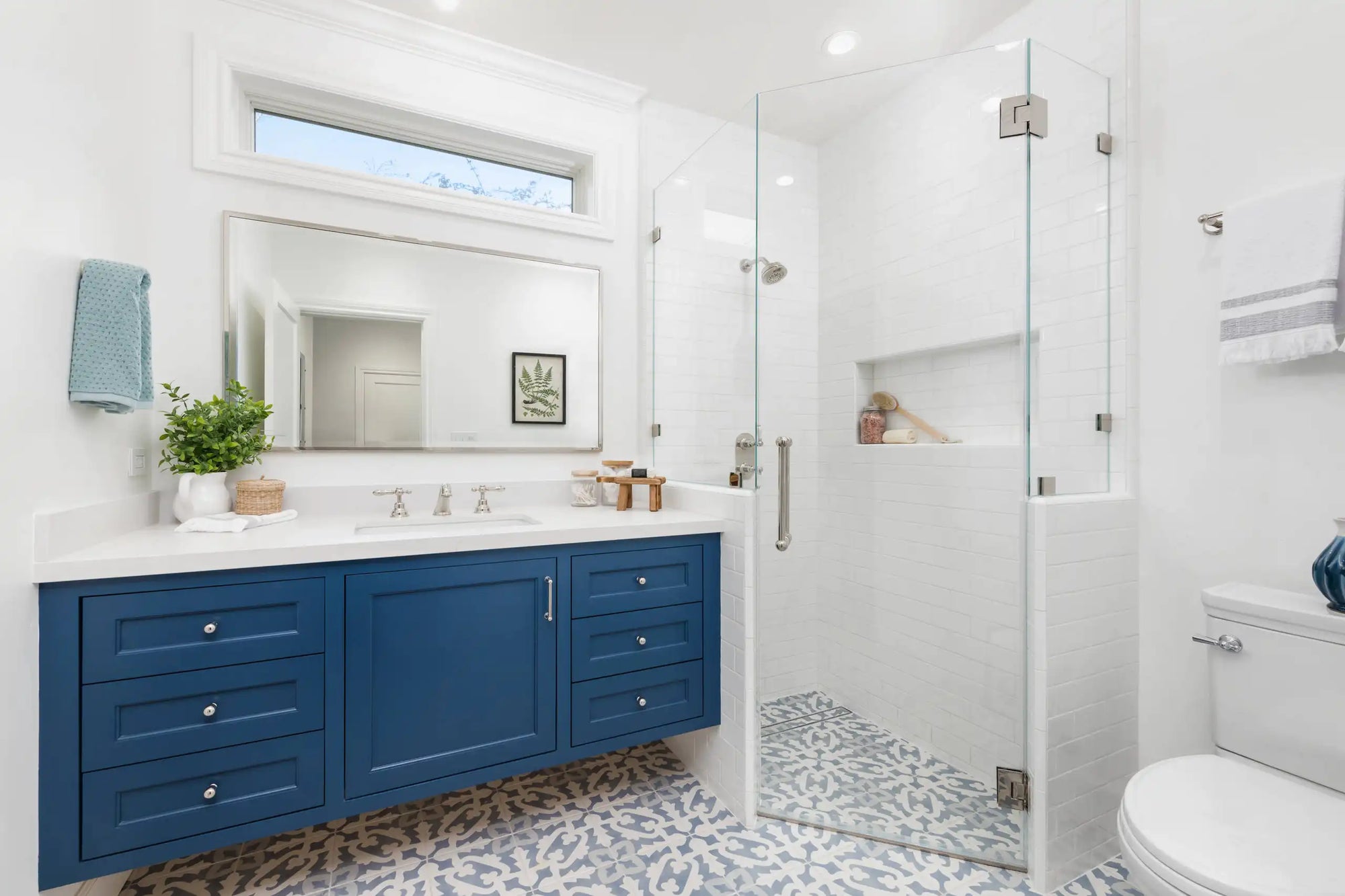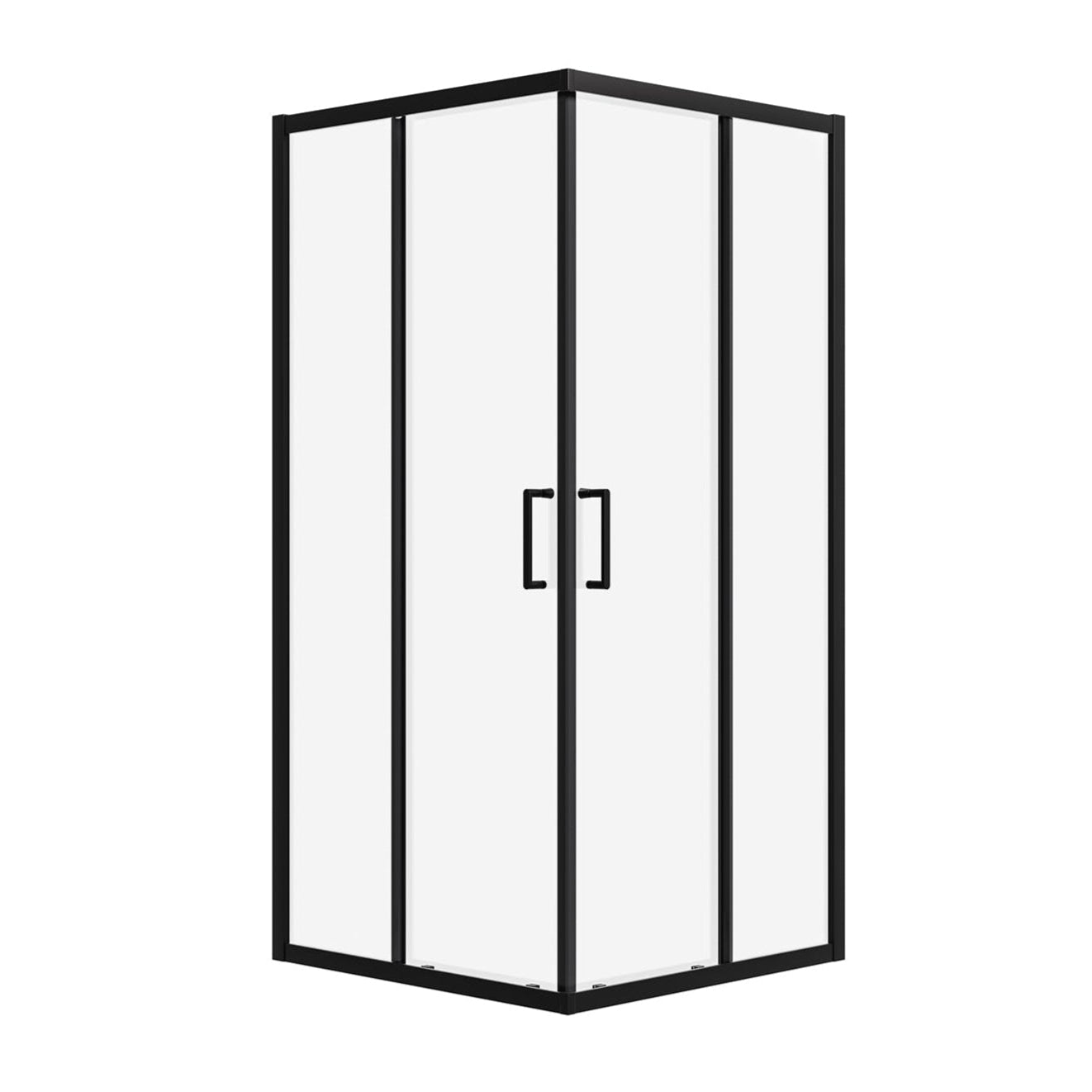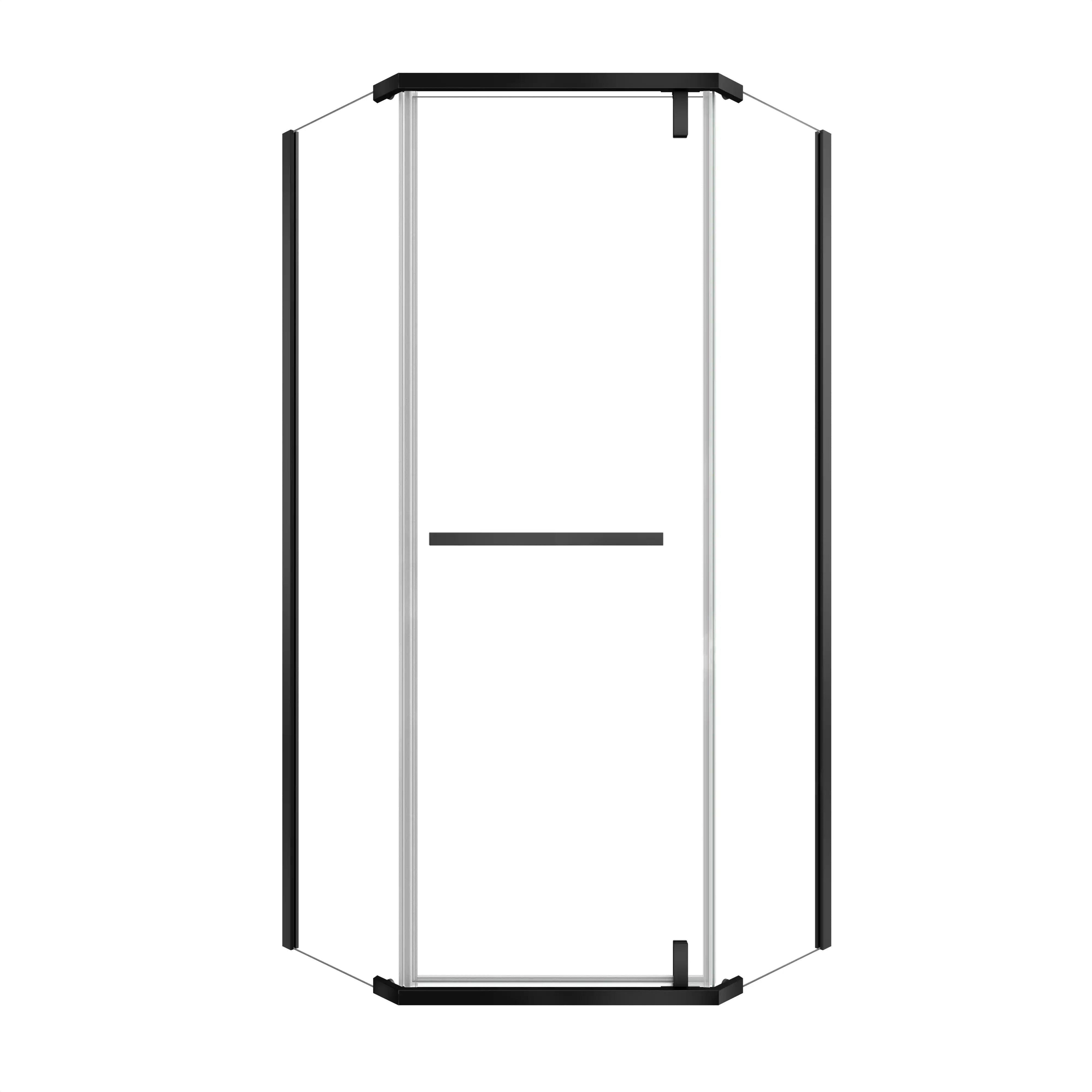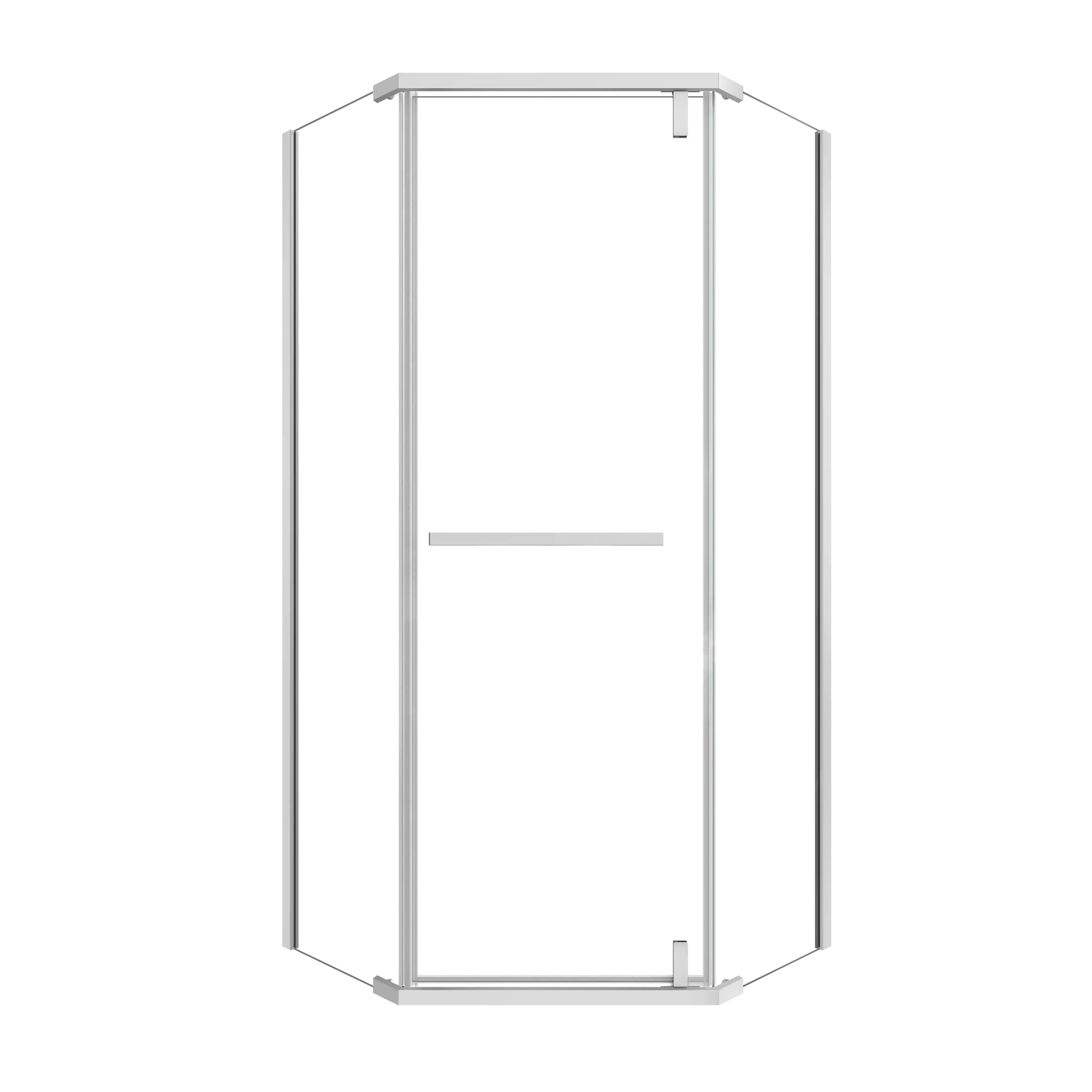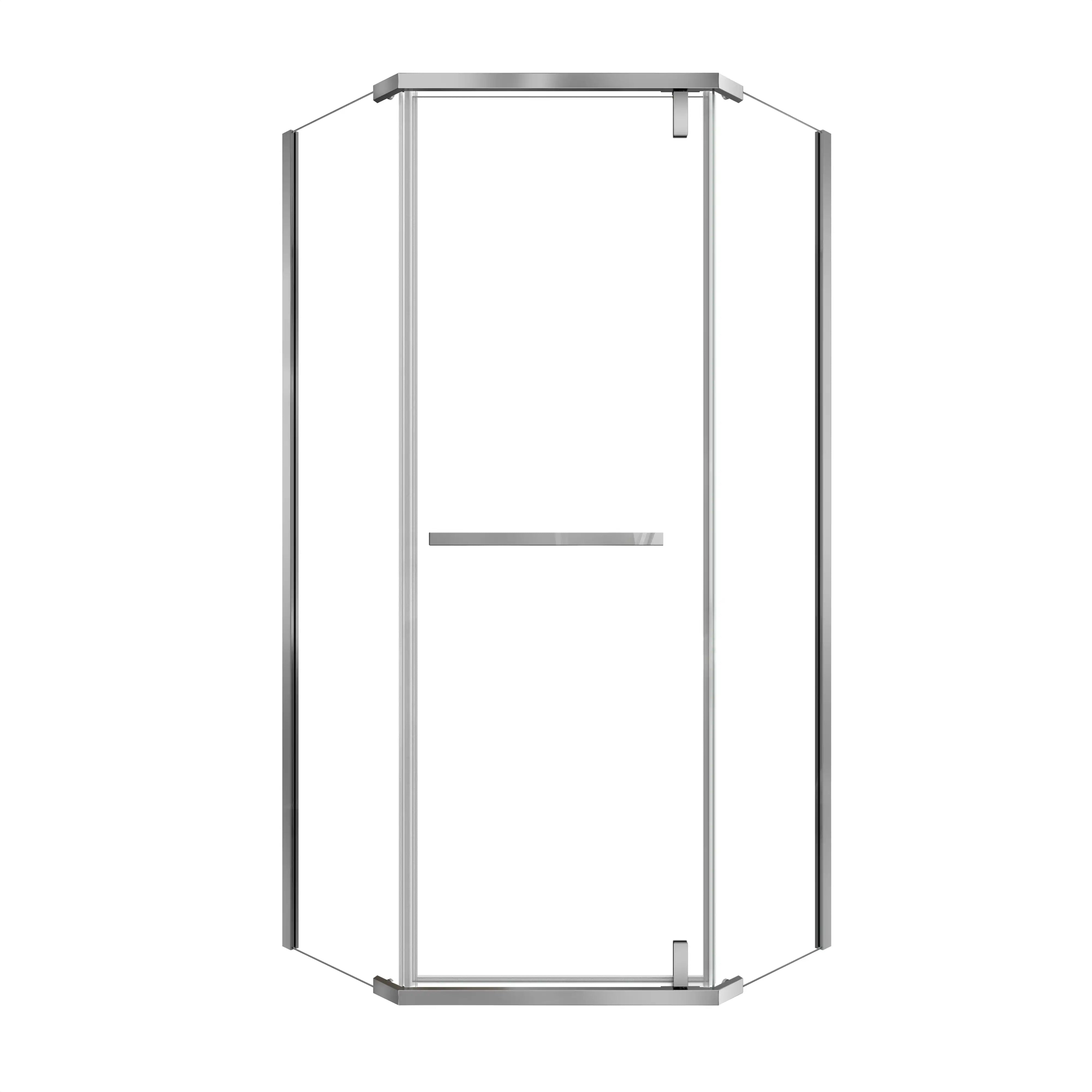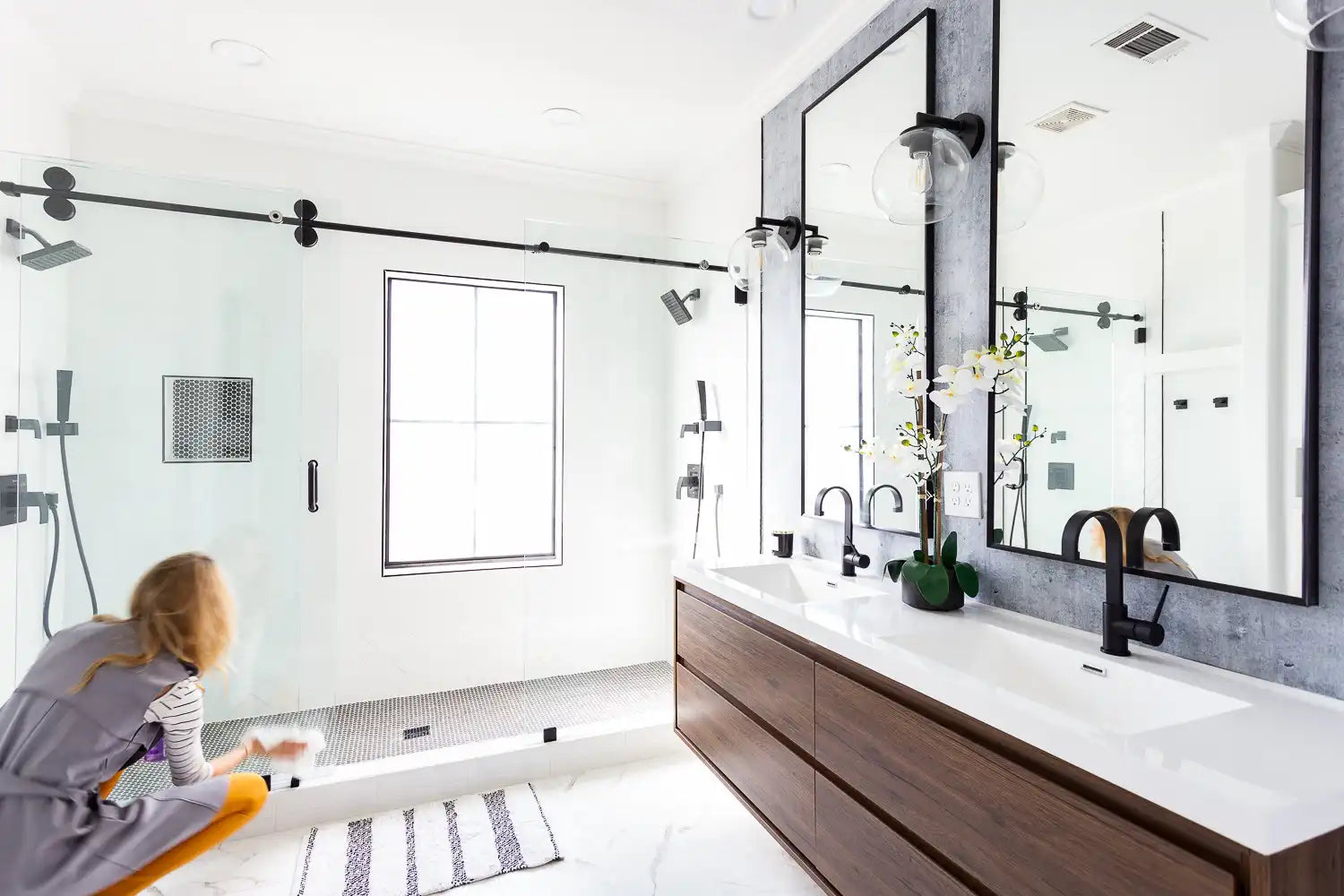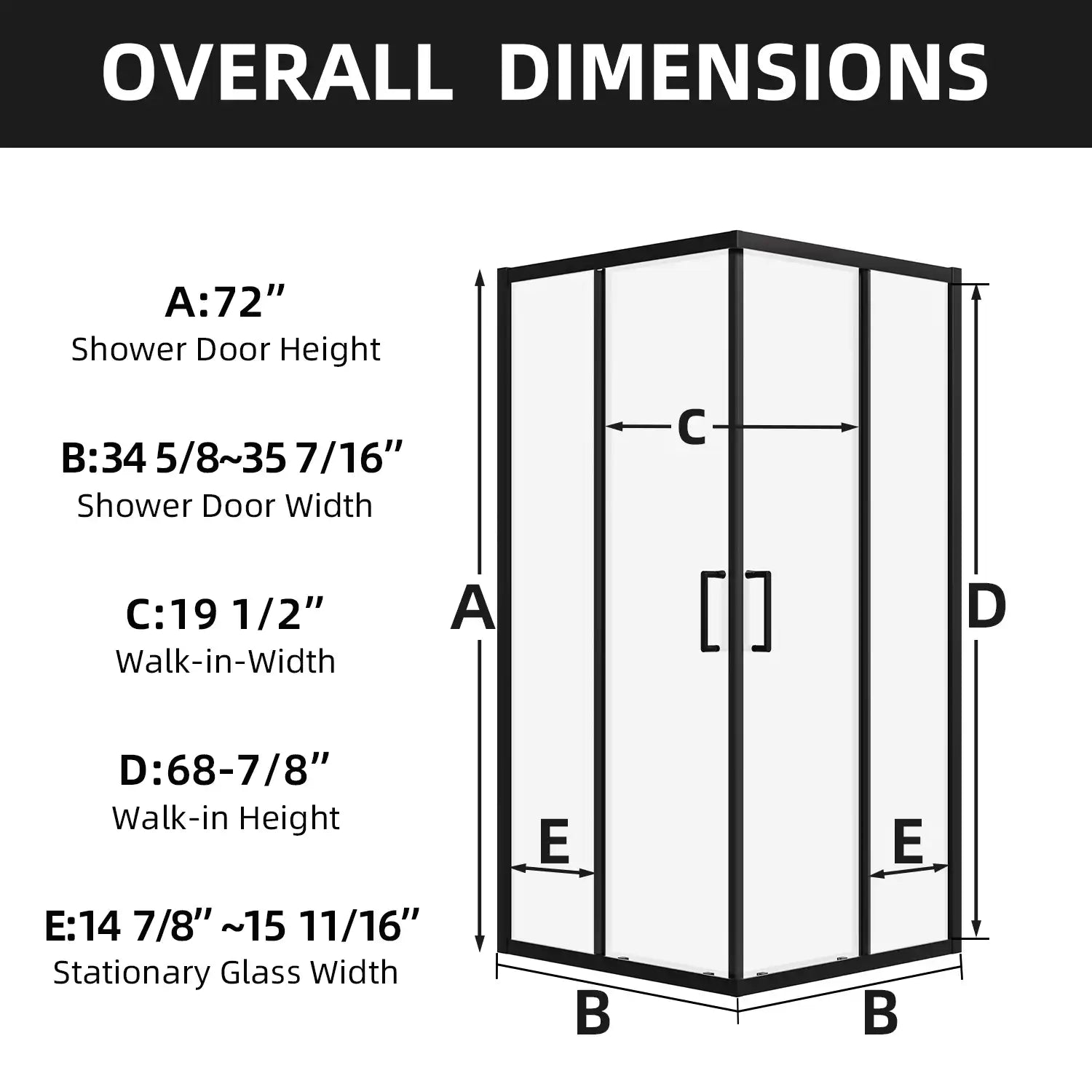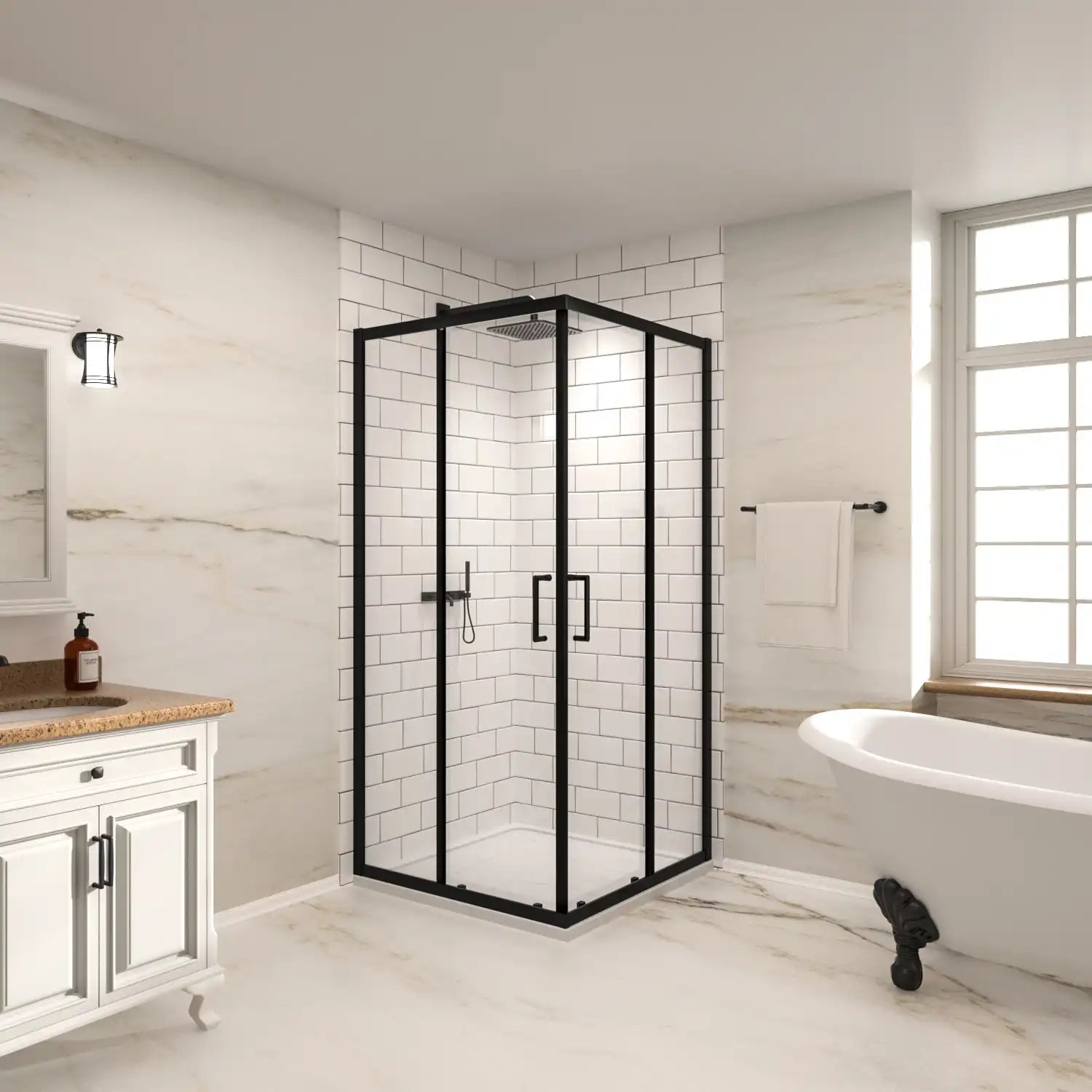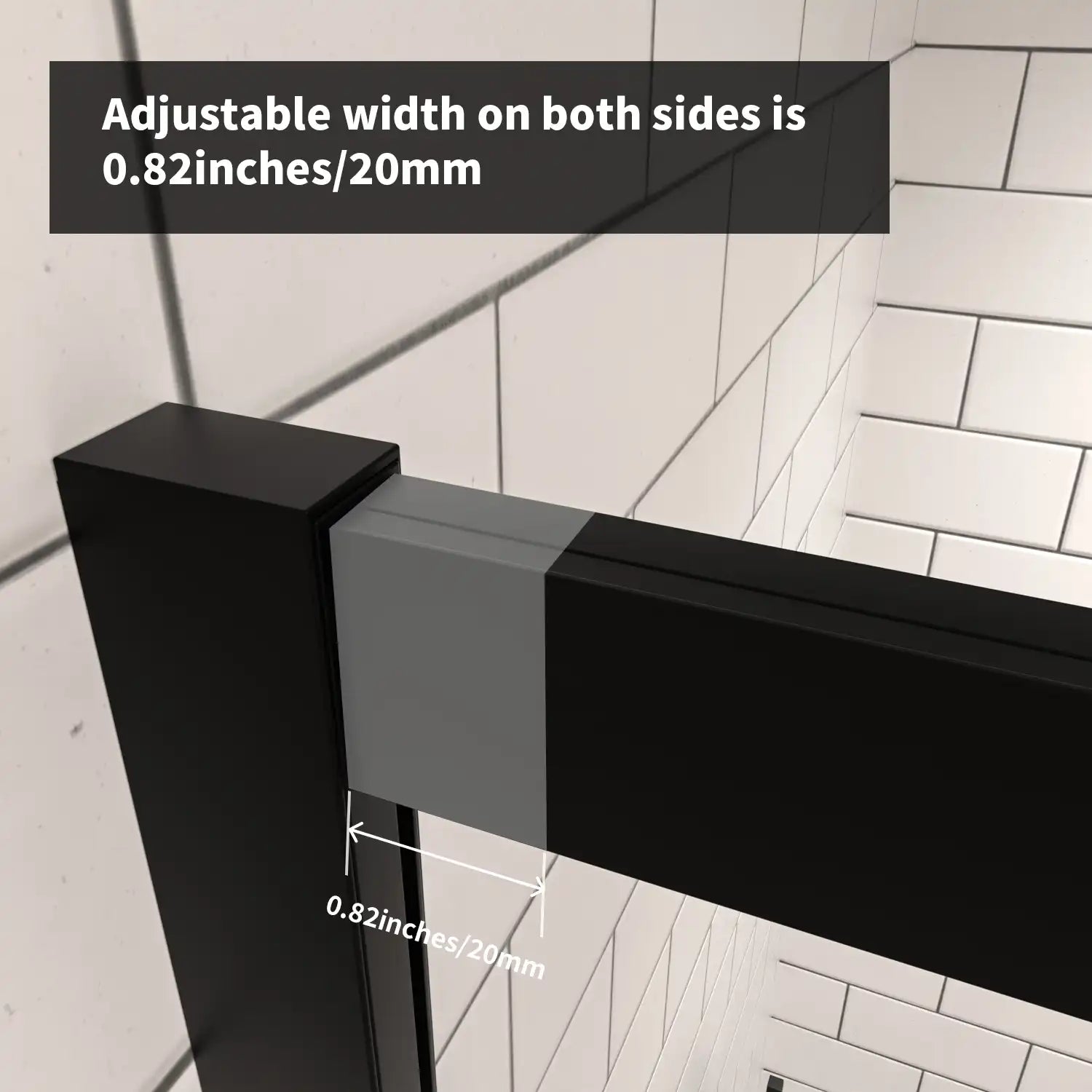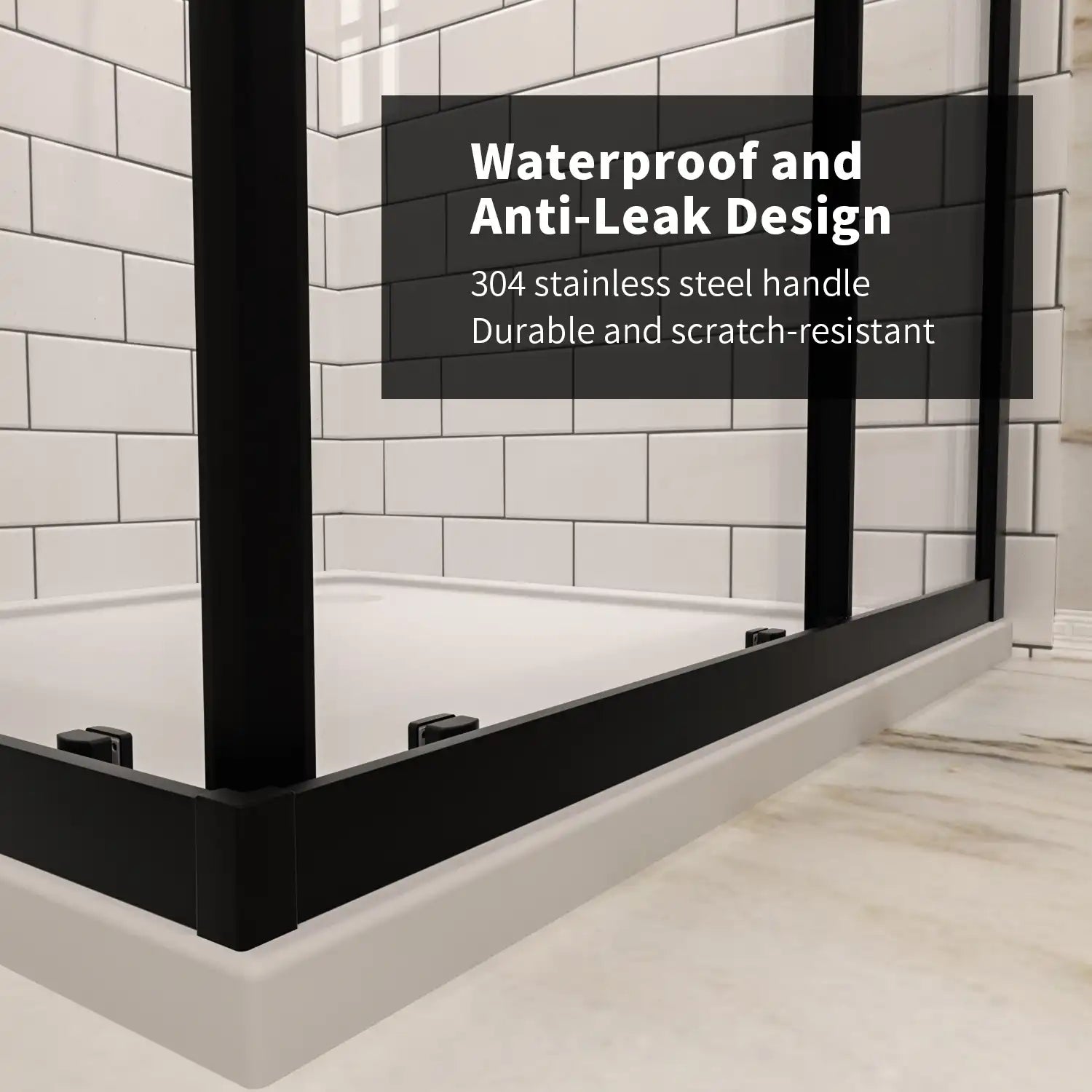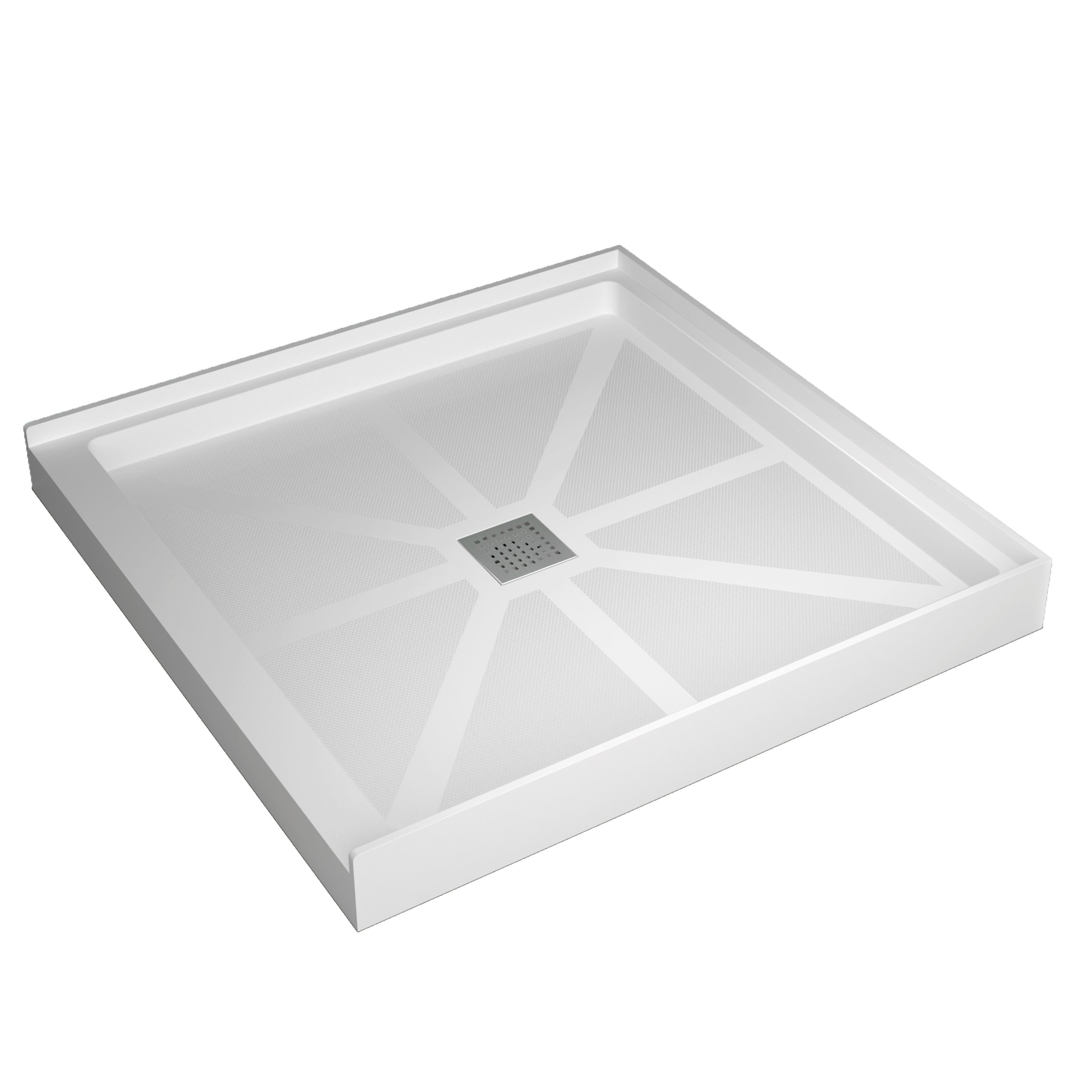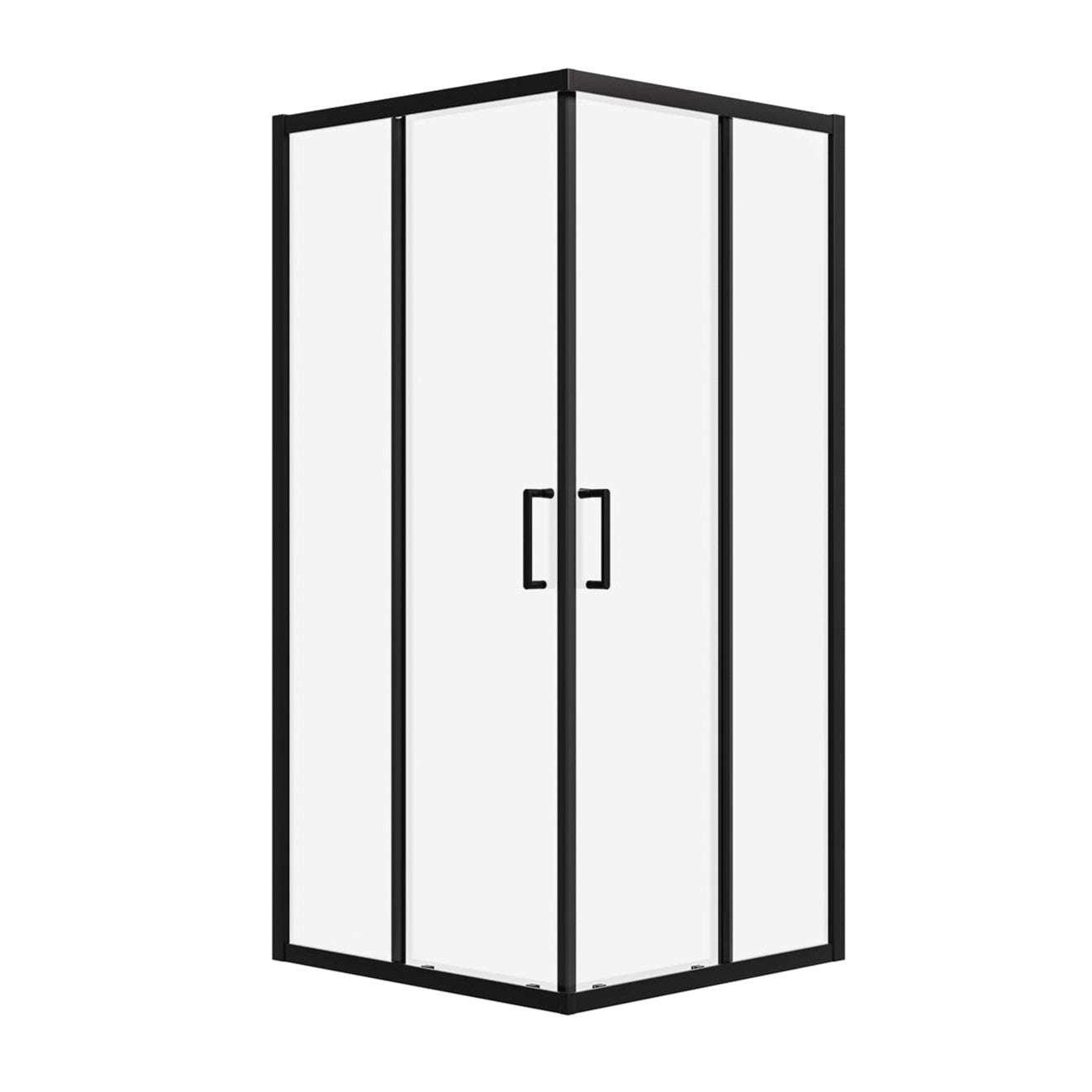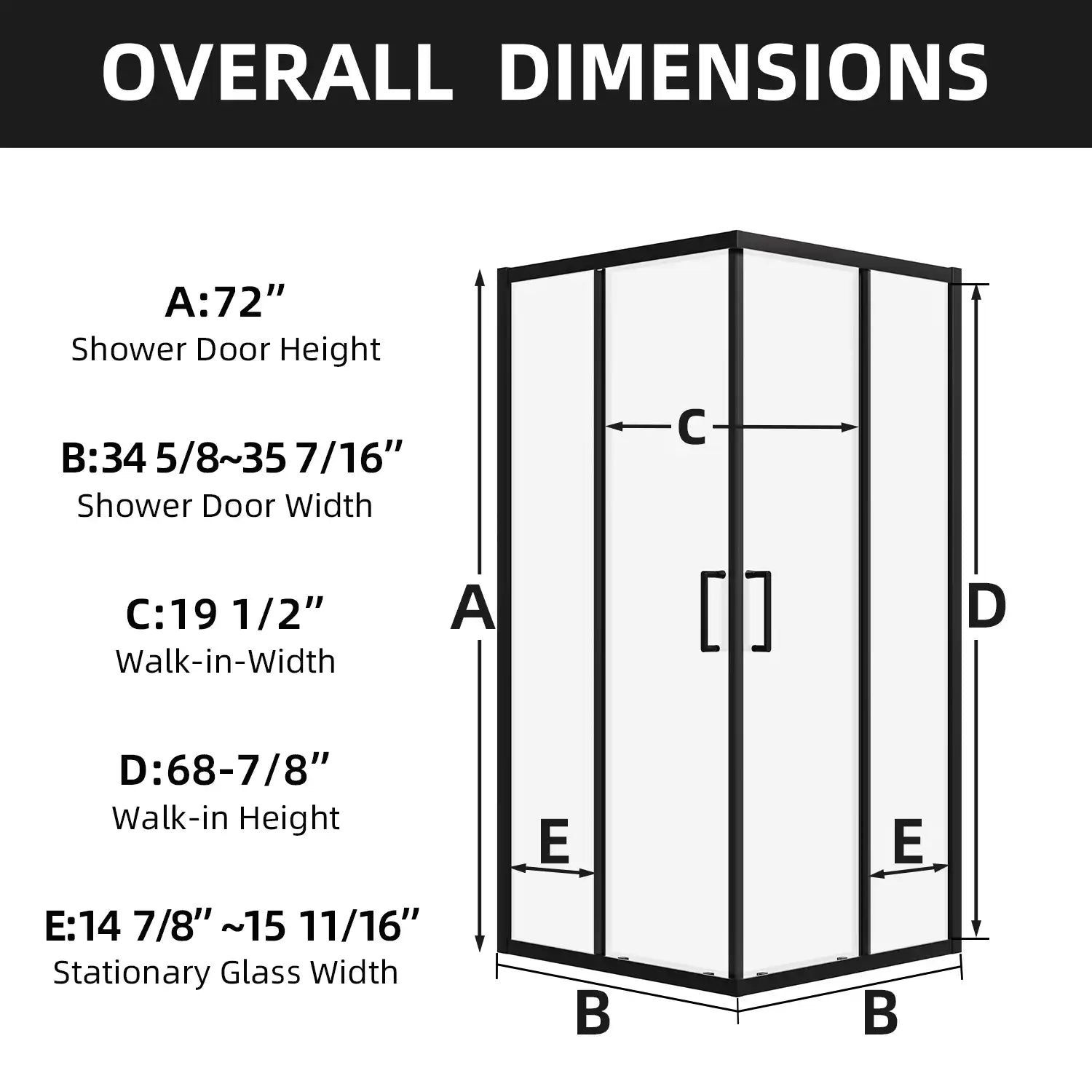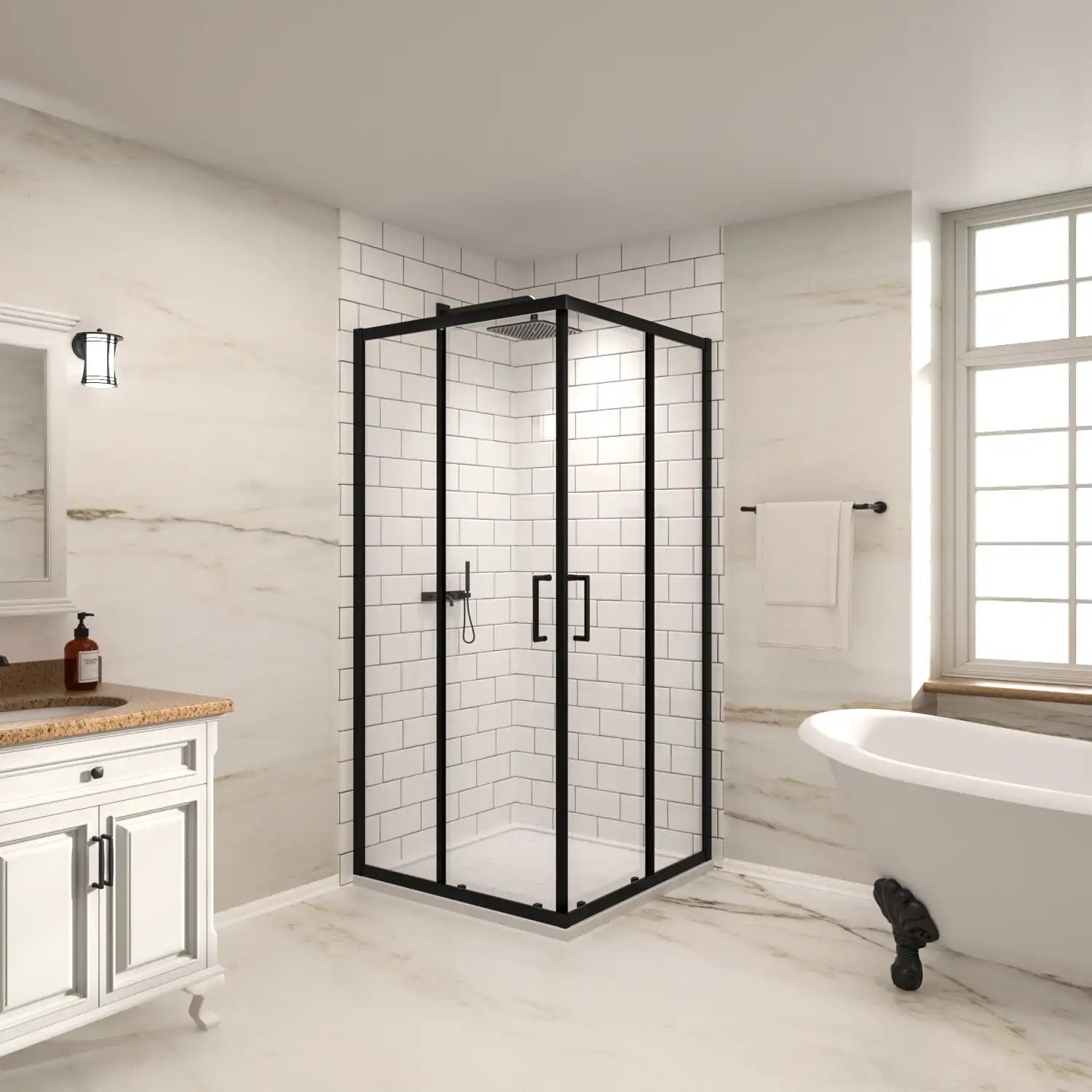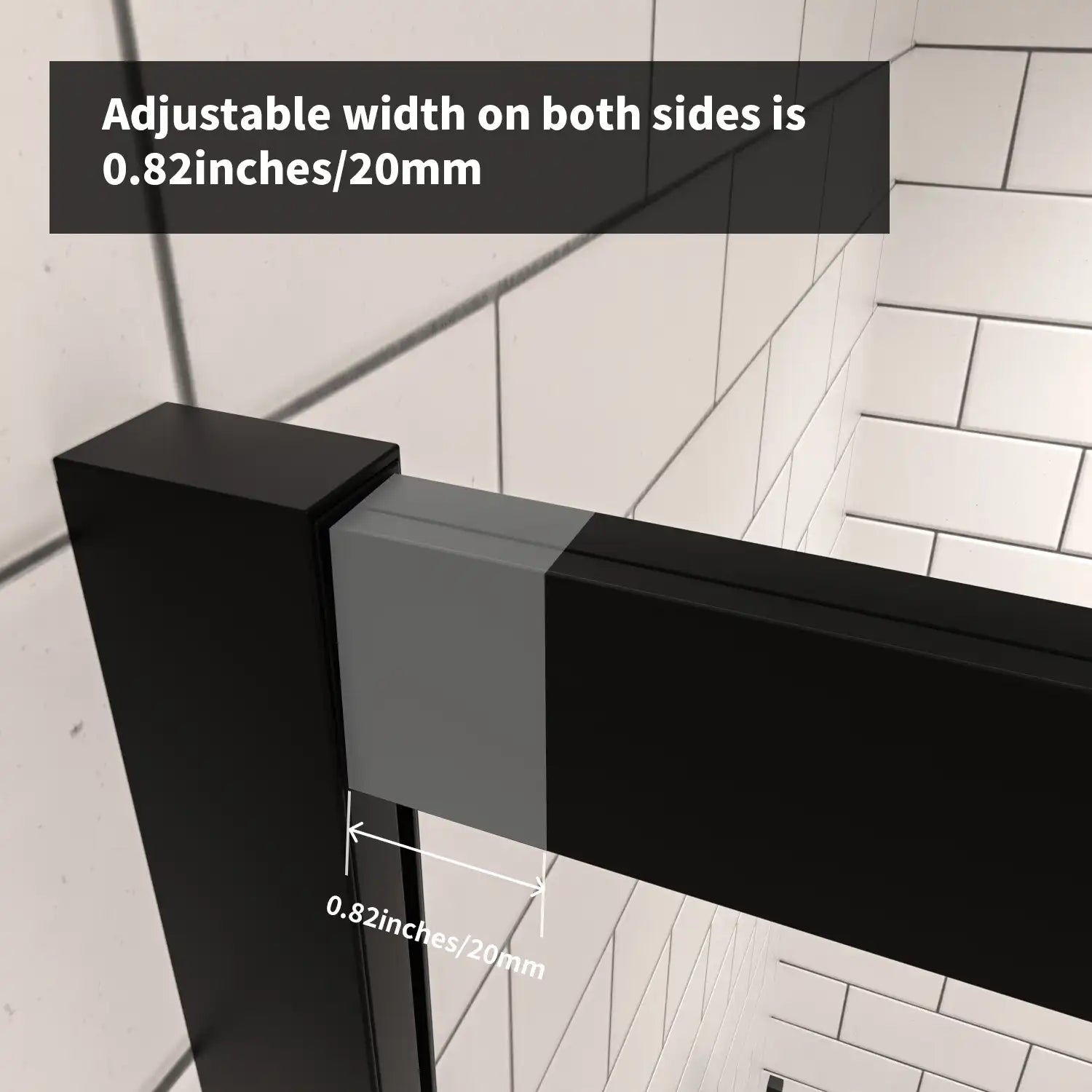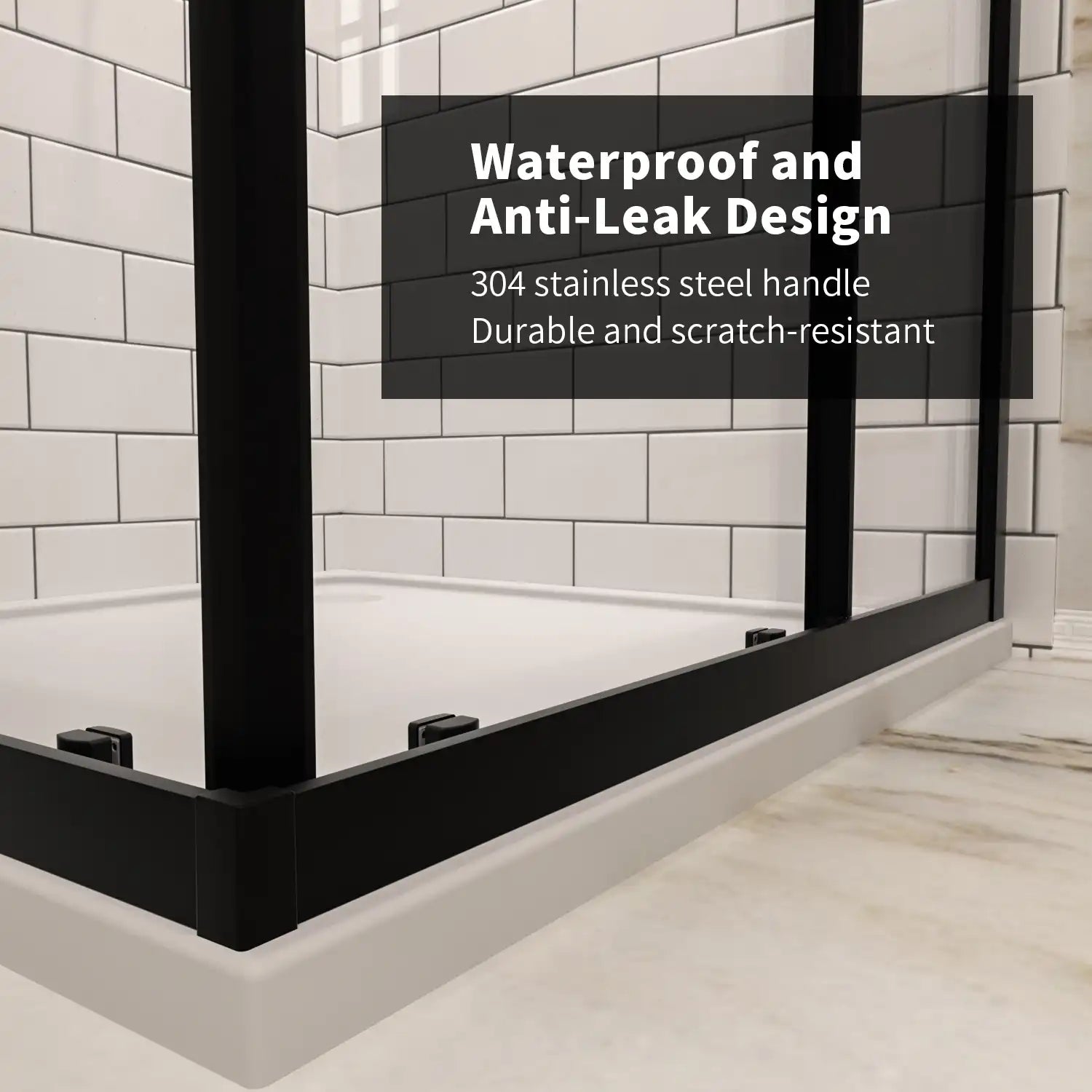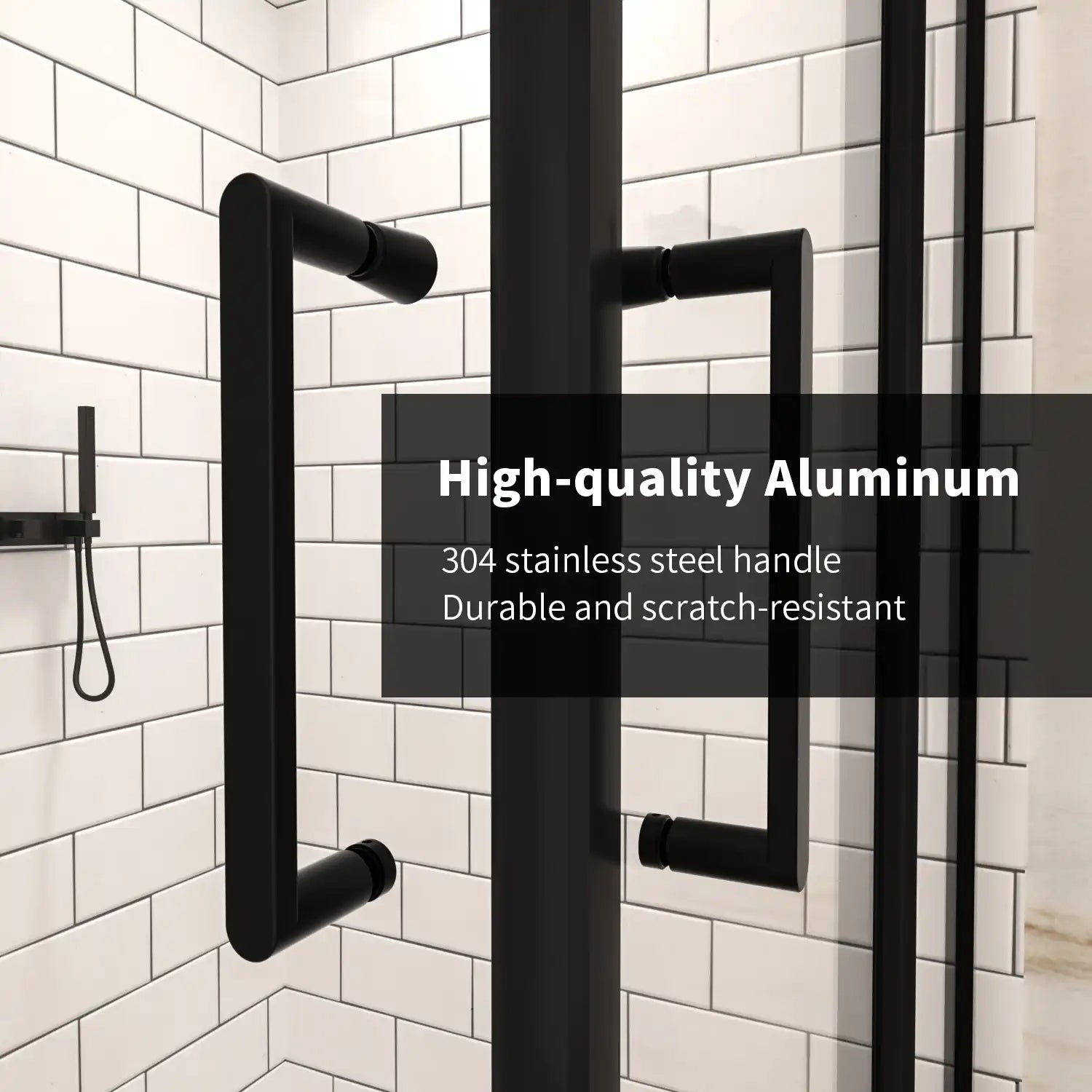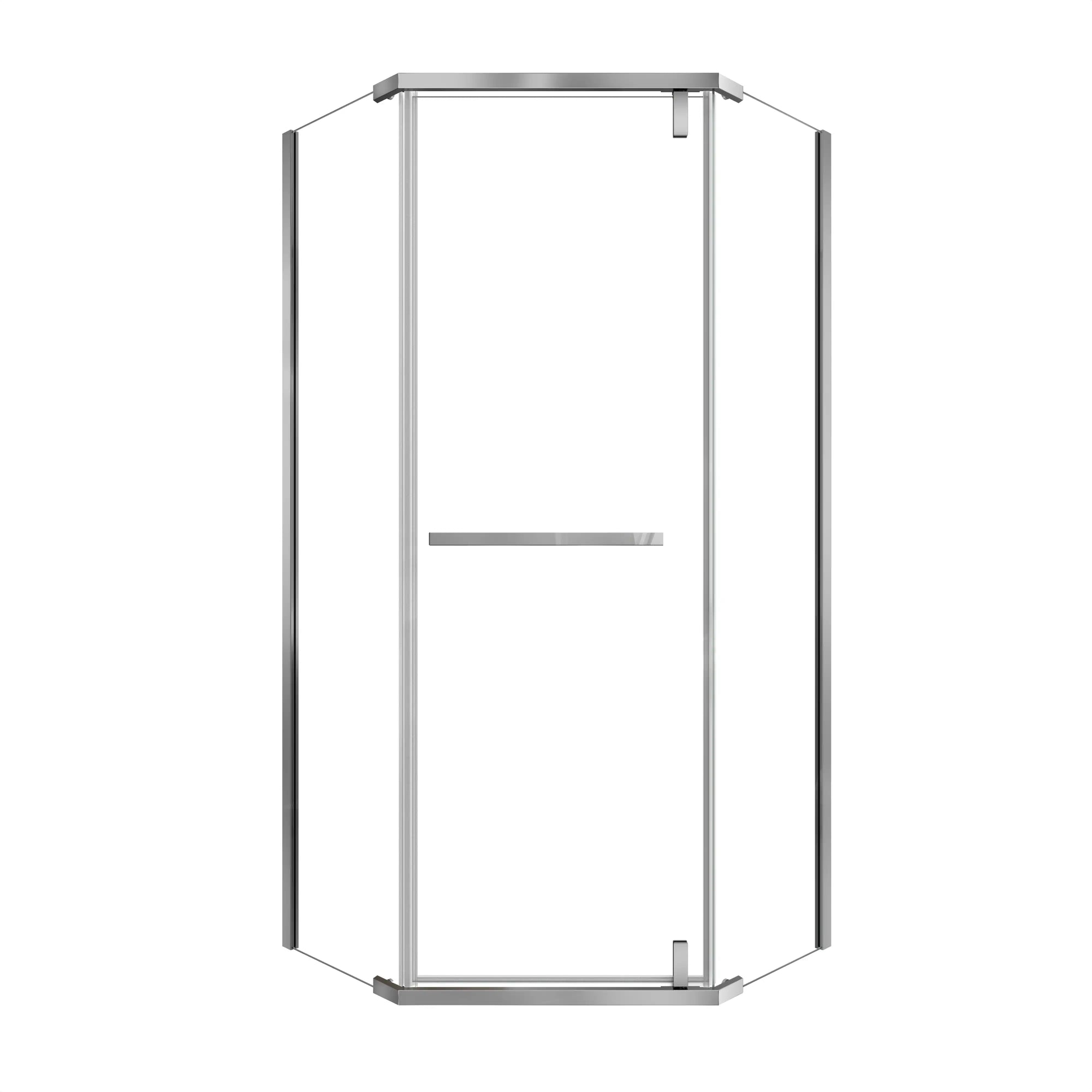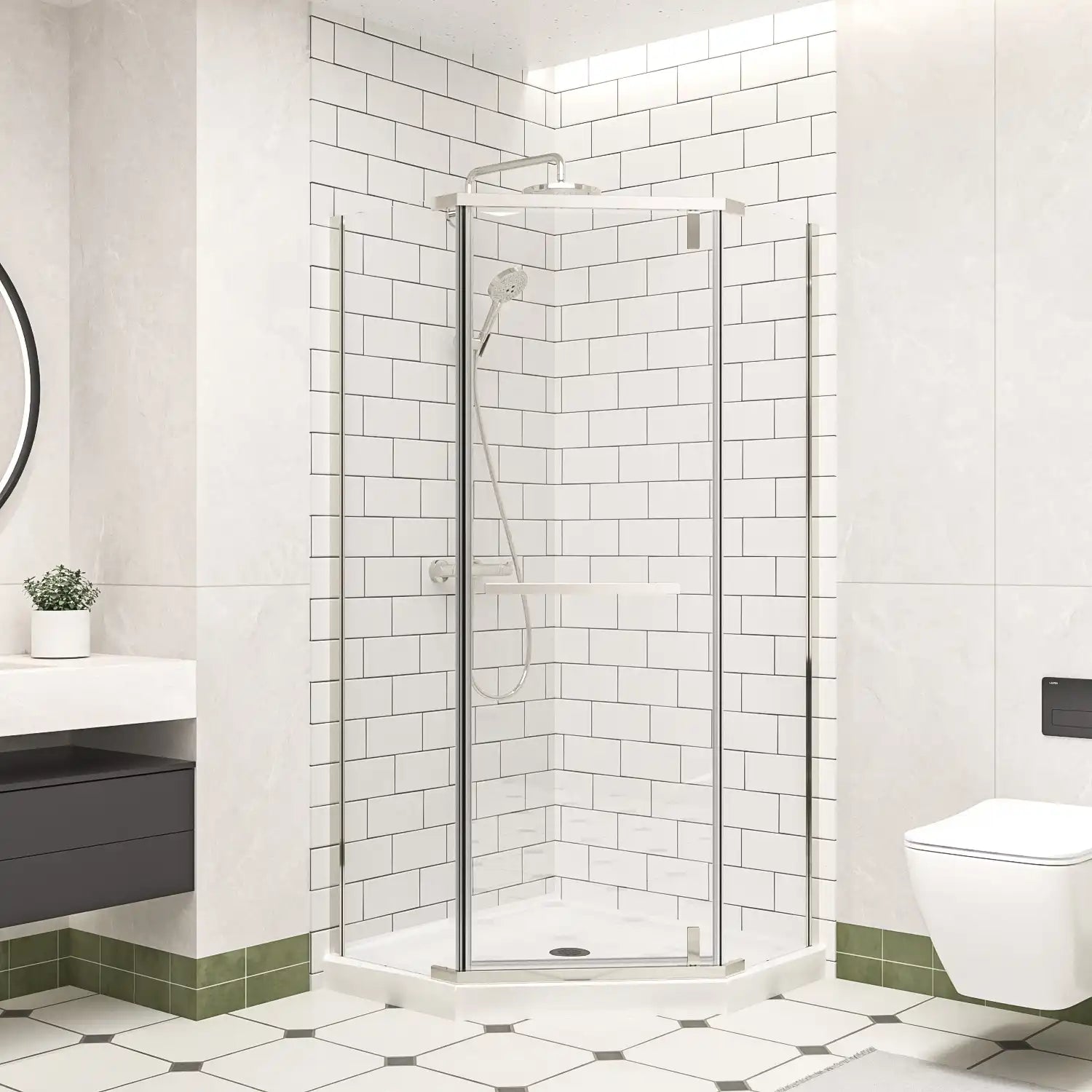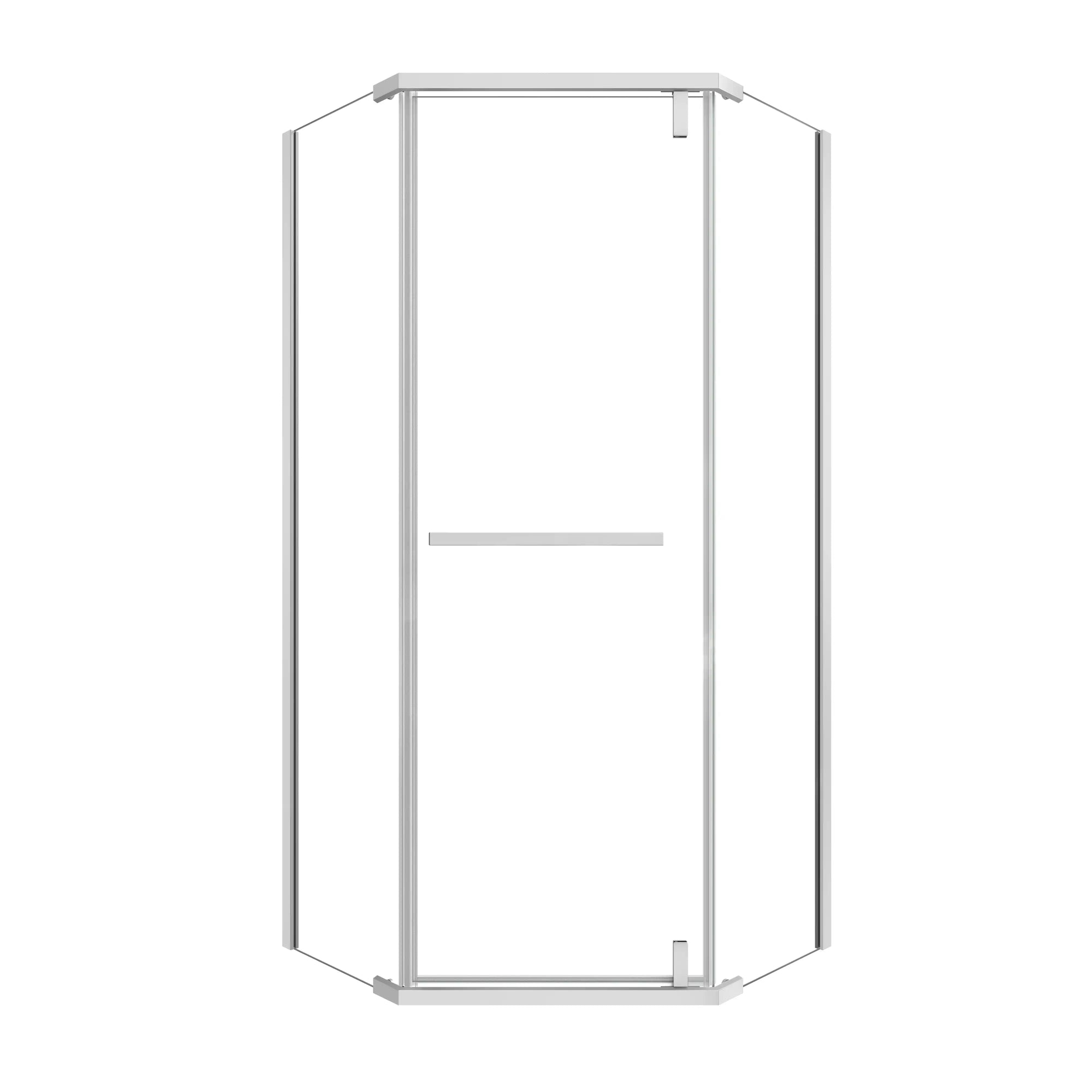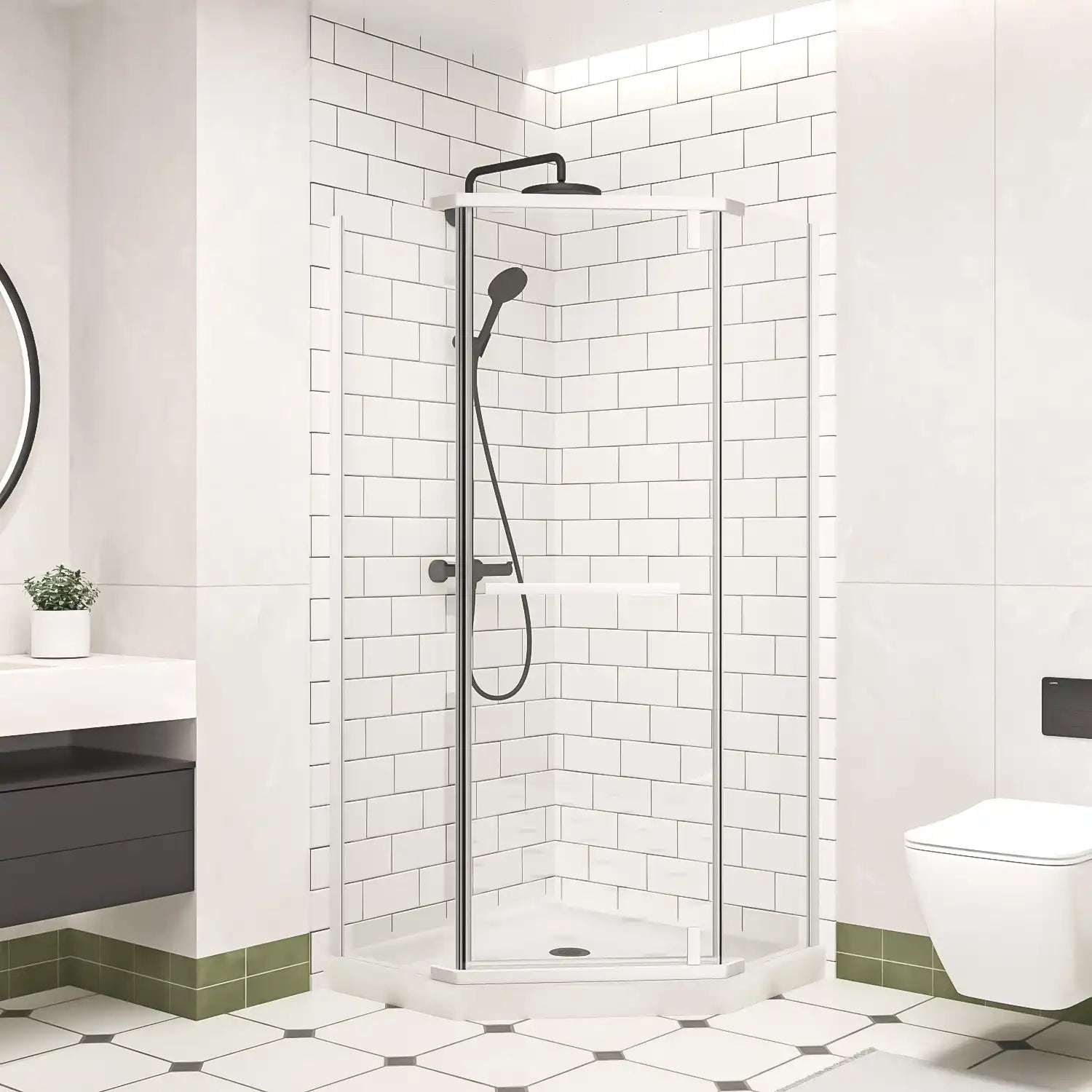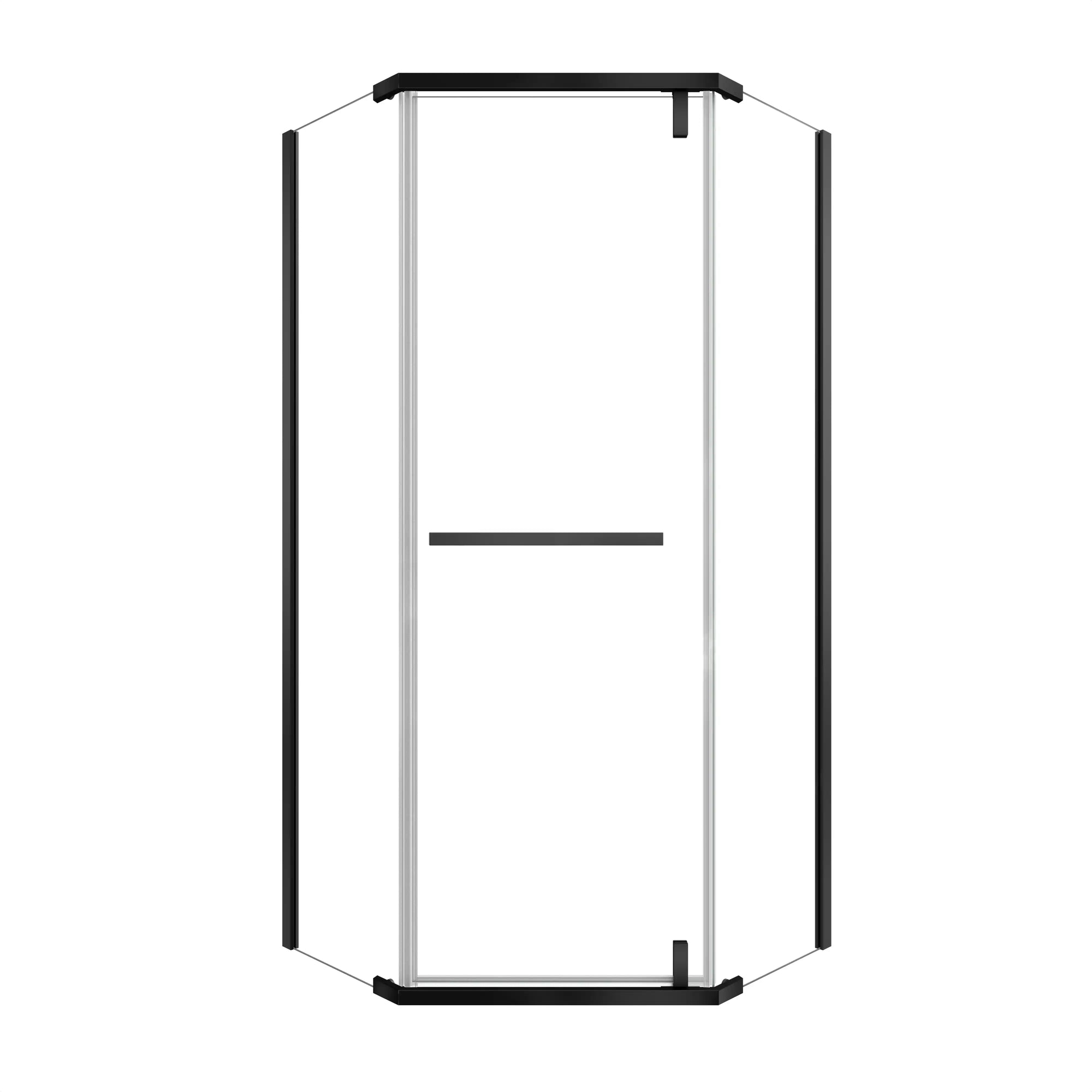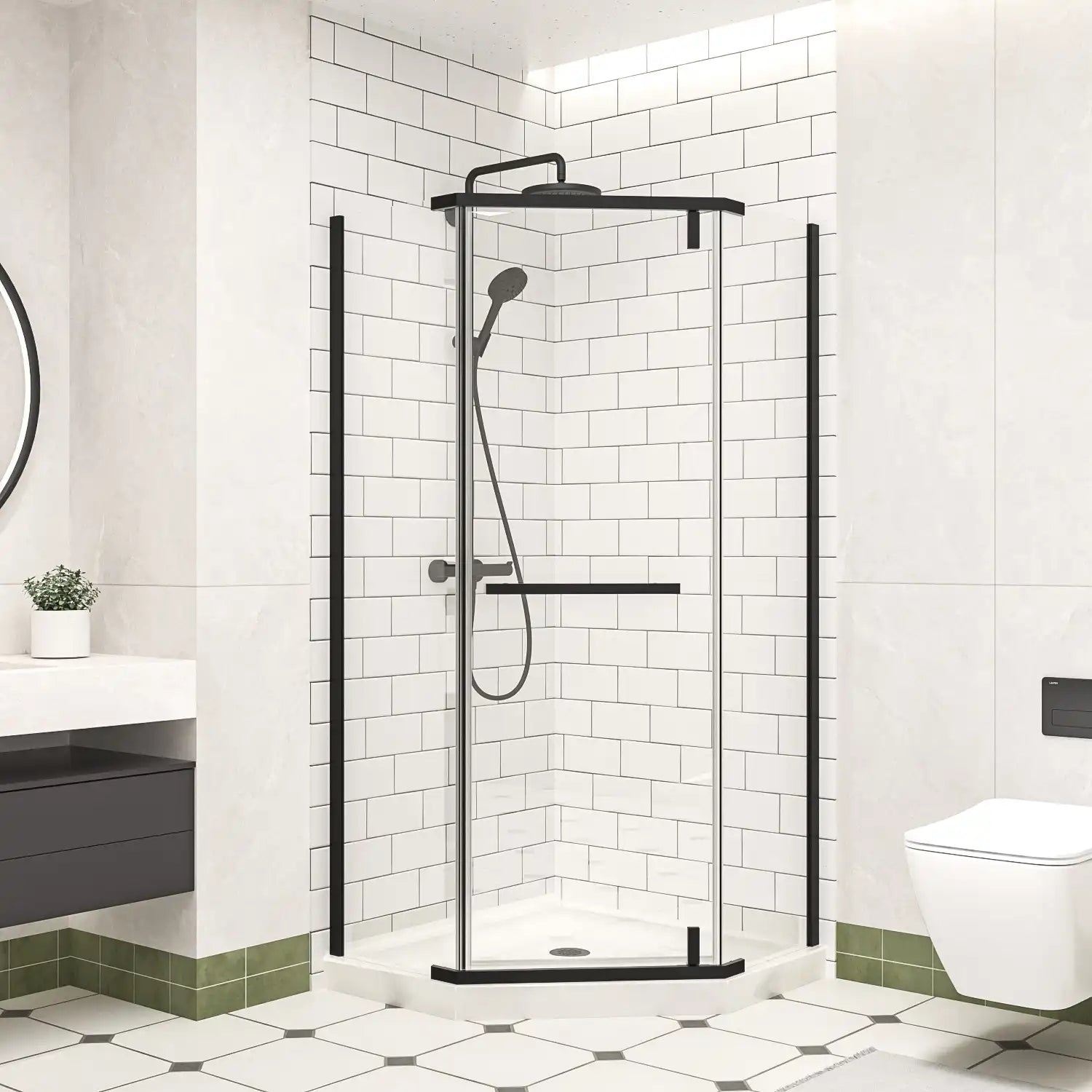Table of Contents
- Why Basic Corner Shower Stalls Seem Hard to Find
- How Much Should You Expect to Pay?
- Prefab Shower Kits vs. DIY Combinations
- Choosing the Right Size and Design
- Materials That Work (and What to Avoid)
- Frequently Asked Questions About Corner Shower Stalls
- Final Thoughts
- Related Articles
If you've been browsing for corner shower stalls lately, you may have noticed something surprising: many options on the market look overly expensive, complicated to install, or designed for luxury remodels. Yet what many homeowners truly want is a simple, affordable corner shower stall—something that works in a basement bathroom, a guest bath, or as a practical addition while the main bathroom is under renovation.
This guide is designed to cut through the confusion. I'll walk you through what's available, how much you should expect to spend, and how to choose a setup that fits both your budget and your space.

Why Basic Corner Shower Stalls Seem Hard to Find
For many homeowners, the search for basic corner shower stalls quickly turns into frustration. What once seemed like a simple purchase now feels like digging through endless listings with little success. The reasons behind this shift are worth understanding:
1. Industry focus on luxury upgrades
Over the past decade, many manufacturers have leaned heavily into promoting high-margin products such as frameless glass enclosures, spa-style showers, and custom tiled units. These designs dominate catalogs and store displays, while practical and affordable corner shower stalls receive far less visibility.
2. Limited in-store selection
Visit a home improvement store today and you may only find one or two compact shower kits displayed on the floor. The rest are pushed online, often through third-party sellers. That makes it difficult to compare quality in person, and shoppers sometimes hesitate to order when they can't see dimensions or finishes firsthand.
3. Concerns about ultra-low-cost models
Entry-level kits once had a reputation for thin acrylic panels, cracking bases, and hardware that rusted after only a short period. Many retailers reduced their stock of these "contractor special" units to avoid complaints or returns, which has made simple corner shower stalls harder to locate.
4. Regional supply challenges
Availability can vary drastically by location. A 36"x36" model might be common in one region but nearly impossible to find in another, especially when shipping oversized packages isn't cost-effective for retailers.
5. Online shopping frustrations
Large retail websites often list dozens of models, but with poor filtering tools and vague descriptions. This creates a situation where buyers can't tell which kits are truly complete (base, walls, and enclosure) and which are sold as partial sets, leading to confusion and wasted time.
How Ace Decor Makes It Easier
At Ace Decor, we recognize these pain points and have structured our product range to remove them. When you shop for corner shower stalls with us, you can expect:
1. Consistent stock
Our U.S. warehouses maintain reliable inventory levels, ensuring that popular sizes and configurations are available when you need them. No more chasing down a model that disappears just as you're ready to buy.
2. Secure shipping
Every corner shower stall is packed with reinforced materials and shipped via trusted carriers. Units arrive safe and intact, eliminating the common worry of receiving damaged panels or bases.
3. Value-added protection
For extra confidence, Ace Decor offers enhanced protection services that cover accidental damage during transit. Even in the rare case of an issue, your investment is safeguarded.
4. Professional after-sales support
Our team doesn't stop at delivery. From guidance on measuring your bathroom to installation advice and aftercare recommendations, you'll always have expert help at hand.
5. Practical, curated options
Unlike broad retailers that mix luxury with bargain-bin models, we curate corner shower stalls that balance affordability, durability, and design. This ensures you're not forced to choose between poor quality and overpriced luxury.
How Much Should You Expect to Pay?
When shopping for corner shower stalls, one of the first questions most homeowners have is cost. Prices can vary widely depending on design, material, and whether you choose a ready-to-install kit or build a custom setup. Here's what you can expect across different categories:
| Type | Typical Price Range | What’s Included | Best For |
|---|---|---|---|
| Entry-level prefab kits | $300–$500 | Base, wall panels, curtain or basic framed door | Quick basement or guest bathroom solution |
| Mid-range units | $600–$1000 | Tempered glass door (sliding or hinged), acrylic or fiberglass walls, more design choices | Everyday family use with added durability |
| Custom/tiled solutions | $1200–$2000+ | Base, tiled walls, custom glass enclosure | High-end remodels, long-term investment bathrooms |
🔒 Tips
If your budget is tighter, combining a fiberglass or acrylic base with tiled walls or a simple shower curtain is often the most economical yet reliable solution.
Key Factors That Influence Price
- Size of the enclosure – Smaller 36"x36" stalls are usually cheaper than larger 38" or 42" models. Every additional inch of glass or acrylic adds cost.
- Type of door – A framed sliding door is budget-friendly, while frameless glass or hinged doors increase the price significantly.
- Material of the walls – Fiberglass or acrylic panels are affordable and practical; tile or solid-surface walls come with higher costs but offer a more upscale appearance.
- Brand and design details – Well-known brands often command higher prices, but they may also offer better warranties and finishes.
- Installation costs – Prefab kits are designed for easier installation, keeping labor costs low. Custom-tiled showers require skilled installation, waterproofing membranes, grout, and sealing—all of which add to the total expense.
- Accessories and fixtures – Don't forget extras like faucets, shower heads, and matching finishes. Chrome is often the cheapest, while brushed nickel, matte black, or stainless-steel fixtures will increase the final cost.
Budgeting Smart for Corner Shower Stalls
If your main goal is function, an entry-level prefab kit will usually meet your needs without straining the budget. However, if you're planning for long-term daily use, spending a little more upfront on a mid-range kit with a sturdy glass door can save you from repairs or replacements later. For those who see the bathroom as a design centerpiece, a custom tiled stall with glass doors is worth the investment, but it's wise to plan for both higher initial costs and ongoing maintenance.
The key is to balance cost with your bathroom’s purpose: is this a temporary basement solution, a family’s main shower, or a permanent upgrade in a primary bath? Answering that question will help you decide which price range makes the most sense.
Prefab Shower Kits vs. DIY Combinations
When it comes to installing corner shower stalls, most homeowners face a key decision: should I purchase a ready-to-install prefab kit, or build a stall by combining a base, tiled walls, and a separate door? Both approaches have their benefits—and potential drawbacks.
Prefab Kits (All-in-One)
Prefab corner shower stalls remain the most straightforward choice.
- Quick and simple installation – Because the base, walls, and enclosure are designed to fit together, you save time on measurements and waterproofing details.
- All-in-one convenience – Everything you need usually comes in the box: the shower pan, wall panels, and a door or curtain option.
- Predictable cost – Most kits fall within a set price range, so you can budget with confidence.
- Compact and practical – Ideal for basement bathrooms, rental properties, or guest bathrooms where speed and functionality matter most.
🔒 Downsides
Style options are limited, and sizes tend to be standardized (36"x36" or 38"x38"). If you need a unique layout, prefab kits may not be flexible enough.
DIY Combinations (Base + Tile + Door)
For homeowners willing to invest more time and effort, assembling a corner shower stall from separate components can deliver a more custom look.
- Design flexibility – Choose a fiberglass or acrylic base, then finish walls with tile or waterproof panels, and select a glass door that suits your space.
- Upscale appearance – Tiled walls or frameless glass doors create a more polished, high-end finish compared to basic prefabricated walls.
- Longevity – Properly installed tile and high-quality glass can outlast many prefab wall panels.
🔒 Considerations
This option often comes with hidden costs. You’ll need waterproofing membranes, grout, silicone, and potentially professional installation. Labor takes longer, and mistakes can lead to leaks.
Which Option Makes Sense for You?
Choose prefab corner shower stalls if you need a quick, reliable solution—especially for secondary bathrooms, basements, or when you want to keep renovation costs predictable.
Choose a DIY combination if the bathroom is a primary space, or if you want a design statement that adds value to your home long-term.
A good way to decide is to ask: Is this bathroom about function and speed, or is it about style and permanence? Your answer will point you toward the right choice.
Cost & Effort Comparison
| Approach | Initial Cost | Installation Difficulty | Long-Term Durability |
|---|---|---|---|
| Prefab Kit | $300–$1000 | Easy; designed for quick DIY install | 5–10 years with proper care |
| DIY Combination | $800–$2000+ | Moderate to advanced; may require a professional | 10–20 years if maintained |
Choosing the Right Size and Design
Corner shower stalls are most valuable in compact bathrooms, but the right size and design make all the difference between a space that feels cramped and one that feels comfortable. Here's what to consider before you buy:
1. Common sizes
- 36"x36" – The most space-efficient choice, often used in basement or guest bathrooms where every inch matters. It provides just enough room for function, but may feel tight for daily long showers.
- 38"x38" – Adds a bit of extra space, giving you more comfort for movement without taking over the bathroom. It's a balanced option for small-to-medium bathrooms.
- 42"x42" and larger – Better suited for main bathrooms, master suites, or when you want a more luxurious feel. Larger corner shower stalls allow for features like built-in shelving or rainfall shower heads.
2. Door and enclosure style
- Sliding doors – A great space saver in tight bathrooms; they glide neatly without requiring clearance.
- Curved/round doors – Not only save space, but also add a sleek, modern look. They make stepping in and out of compact stalls easier.
- Hinged doors – Provide a more traditional, upscale feel, but need clearance to swing open—something to keep in mind if the toilet or vanity is close.
- Shower curtains – The simplest and most cost-effective solution, though they lack the polished finish of glass doors.
3. Framed vs. frameless
Framed glass doors are more affordable, with aluminum or steel frames supporting thinner glass. Frameless glass enclosures use thicker tempered glass for a modern, open look but cost more.
4. Design extras
- Consider built-in shelving or corner caddies to maximize storage without clutter.
- Choose frosted or clear glass depending on whether you prefer privacy or an airy, spacious feel.
- Select finishes for handles and hardware that match other fixtures in your bathroom for a cohesive design.

Materials That Work (and What to Avoid)
When choosing corner shower stalls, the material you select will directly impact cost, durability, and daily maintenance. Each option comes with trade-offs worth considering:
1. Acrylic or fiberglass walls
Lightweight, budget-friendly, and easy to install, these materials are often found in entryto mid-level shower kits. They resist mold and mildew if cleaned regularly, and scratches are less noticeable than on glass. However, very thin acrylic or fiberglass can feel flimsy, and cheaper models may yellow or dull over time.
2. Tempered glass doors
A hallmark of higher-quality corner shower stalls, tempered glass doors (whether framed or frameless) provide durability and a sleek, modern appearance. They are easier to clean than curtains and more resistant to everyday wear. Frameless designs use thicker glass (often 8–10 mm), which improves stability but also increases cost.
3. Tile walls
Tiled walls remain one of the most customizable and premium-looking choices. With endless options—ceramic, porcelain, or natural stone—you can match your bathroom's style perfectly. Tiles are long-lasting, but they require proper waterproofing during installation and ongoing grout maintenance. Without regular sealing, grout lines can discolor or allow water intrusion.
4. Mixed setups
Many homeowners opt for a hybrid approach: pairing a durable prefab shower base with tiled walls or upgrading a standard kit by replacing a curtain with a tempered glass door. This often delivers the best balance of cost, style, and durability.
From my experience, the material you choose for corner shower stalls makes the biggest difference not just in how the bathroom looks, but in how it performs years down the road.
I've seen what happens when people go for the cheapest option: ultra-thin panels that flex and eventually crack, or low-grade metal hardware that begins to rust within a year. It might seem like you're saving money at the start, but those stalls often end up needing early replacement, which costs more in the long run. The same goes for tile—if it isn't properly sealed and maintained, even the most beautiful installation can lead to leaks or discoloration.
What I've found works best is striking a balance. Reinforced acrylic or fiberglass panels are affordable and reliable, especially when paired with a tempered glass door. If you want a more upscale finish, investing in thicker glass or adding tile to the walls gives you durability and style, provided you're willing to handle the upkeep. Quality hardware—stainless steel or aluminum—also makes a noticeable difference in day-to-day use and longevity.
The key lesson is this: when evaluating corner shower stalls, don't focus only on the upfront price. Think about how often the bathroom will be used, who will be using it, and how much maintenance you're comfortable with. Spending a little more on sturdy materials now often saves you from bigger expenses and frustrations later.
Frequently Asked Questions About Corner Shower Stalls
Q1: How much should I realistically budget for a corner shower stall?
From what I've seen, most homeowners spend between $500 and $1000 for a complete prefabricated kit. If you want something more premium—say thicker glass doors or larger dimensions—you're looking at closer to $1200 and above. On the other hand, mixing a fiberglass base with tile can sometimes lower the upfront cost, but the labor and waterproofing supplies often make it equal to or more expensive than a kit. My advice: set aside at least $700–$900 if you want something durable, reliable, and easy to install without surprises.
Q2: Are prefab corner shower stalls durable enough for long-term use?
Yes—when you choose the right quality. I've seen families use a mid-range prefab kit daily for years with no issues, especially if the walls are reinforced acrylic and the door hardware is stainless steel or aluminum. The key is avoiding the cheapest ultra-thin panels, which can crack or discolor. Personally, I recommend prefab stalls for secondary bathrooms, basements, or any project where convenience and reliability matter most.
Q3: What size corner shower stall works best in a small or basement bathroom?
In my experience, a 36"x36" stall is the safest choice for tight layouts—it fits without overwhelming the room. But if you can spare a few extra inches, 38"x38" feels noticeably more comfortable for everyday showers. For main bathrooms where space isn't an issue, larger 42" models are worth considering, especially if you'd like built-in shelves or a more open feel.
Q4: Is it better to tile the walls or stick with a prefab kit?
This depends on your priorities. Tile looks beautiful and can last decades, but it comes with higher costs, longer installation times, and ongoing grout maintenance. Prefab kits, on the other hand, are faster, easier, and usually more budget-friendly. If you're upgrading a bathroom you use every day and want a modern look, tiling might be worth it. But if the project is about practicality—like adding a basement shower while remodeling your main bath—I'd recommend a prefab corner shower stall.
Q5: Where can I buy a corner shower stall I can trust?
Big-box stores and specialty retailers have options, but stock and delivery can be inconsistent. That's one of the reasons I work with Ace Decor—we keep corner shower stalls in stock in the U.S., pack them securely for shipping, and back every order with additional protection services. For me, peace of mind matters just as much as price. Knowing your stall will arrive intact, with a team ready to support you if you have questions, makes the buying process a lot less stressful.
Final Thoughts
Over the years, I've learned that choosing the right corner shower stall is less about chasing the cheapest option and more about finding the balance between function, durability, and peace of mind. I've seen what happens when people cut corners—cracked panels, rusted hardware, and costly replacements that could have been avoided with a slightly better choice upfront. At the same time, I know most homeowners, myself included, don't want to overspend on something that should be practical and straightforward.
That's why I put my trust in solutions that are well-built, fairly priced, and backed by real support. For me, it's not only about how the shower looks on day one, but also about how it performs five or ten years down the line. A good corner shower stall should fit your space, protect your home from water damage, and make daily life a little easier—not more complicated.
At Ace Decor, we've shaped our collection with those values in mind: reliable stock, secure delivery, and customer support that doesn't end once the package arrives. If you're weighing your options, I'd encourage you to take a closer look—you might find the same peace of mind that I did when I stopped chasing "bargain" stalls and started choosing solutions that truly last.
Related Articles
Looking to explore more ideas for upgrading your bathroom? Here are a few guides that dive deeper into smart, affordable solutions beyond corner shower stalls.
- "How to Install Glass Shower Door Frameless on Tile: Step-by-Step Guide"
- "10 Unique Bathtubs That Transform Your Bathroom into a Personal Oasis"
- "The Complete Guide to Choosing the Best 2 Person Jacuzzi Bathtub for Your Home"
- "Brushed Nickel vs Stainless Steel: A Practical Guide for Bathroom Upgrades"
- "What Are the Different Types of Hot Tubs: Complete Guide for Buyers"
- "Best Walk-In Bathtubs: Features, Types, Pros & Cons for Modern Bathrooms"
- "What Is the Best Smart Toilet? 6 Top Brands and Models in the World"
